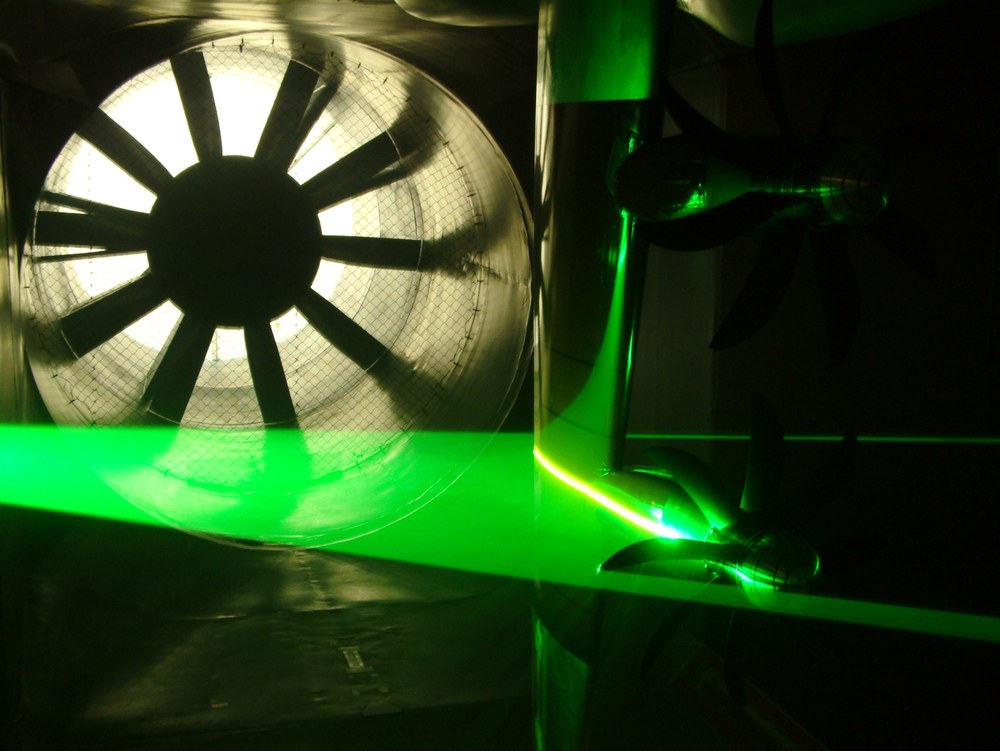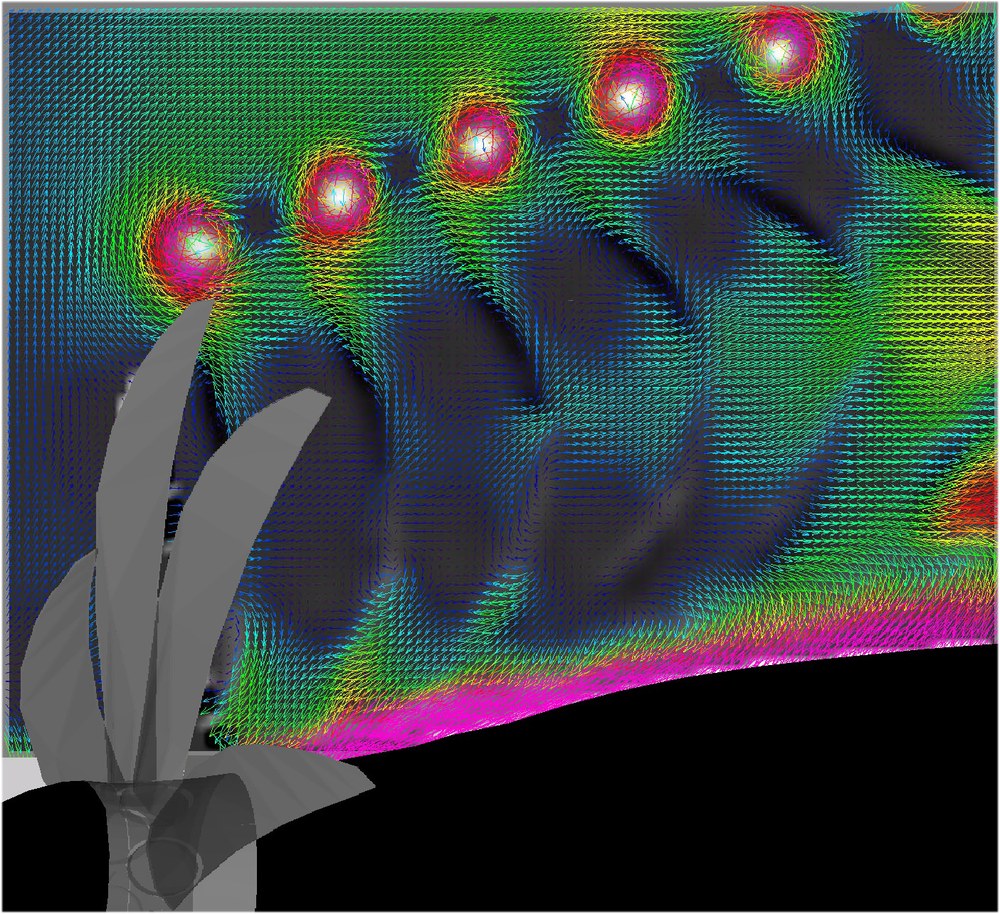Application of Particle Image Velocimetry: Propeller flows

Nowadays in the so called jet-era also turboprops are a reliable and effective drive configuration for a series of aircrafts. From business- and regional planes up to large transport aircrafts turboprops are deployed because of their high thrust efficiency in the subsonic cruise regime. The development of advanced turboprop geometries like counter rotating open turboprop configurations, which can drive also large civil aircrafts up to transonic speed, is of growing importance due to high fuel prices and the desired reduction of atmospheric CO2. In order to reach that goal a detailed knowledge of the highly unsteady flow around and in the wake of such propellers under various circumstances within the regular flight envelope and at their borders is necessary.

By using phase-locked PIV measurements in an industrial wind tunnel at a half-wing model (fig. 1) vortices and shear layers in the direct propeller wake have been visualized quantitatively (fig. 2: one camera view). A PIV system consisting of a 2 x 360 mJ Nd:YAG pulse laser and four CCD- cameras has been used, while image acquisition and laser pulses have been synchronized with fixed phase positions of a propeller blade. Simultaneous traversing of the camera array and laser light sheet enabled to measure at several wing normal planes along the span during wind tunnel operation and change of angle of attack. For each camera field of view and related PIV image typically 10,000 instantaneous velocity vectors can be determined.
The analysis of such velocity field data acquired under various flow conditions opens new insights into the flight dynamical properties of propeller flows and delivers measures of fluid mechanical significance for the validation and development of numerical simulation methods. The numerical calculation of these very complex and unsteady propeller flows is very costly and can be realized with justifiable effort only by using simplifying assumptions. Therefore the PIV technique is well suited for capturing many important aero dynamical properties of propeller flows experimentally and enables in particular in combination with other image based measurement methods like e.g. the IPCT for measuring the blade deformation or the acoustic microphone array technique for sound source analysis an extended understanding for the necessary progress in development.
